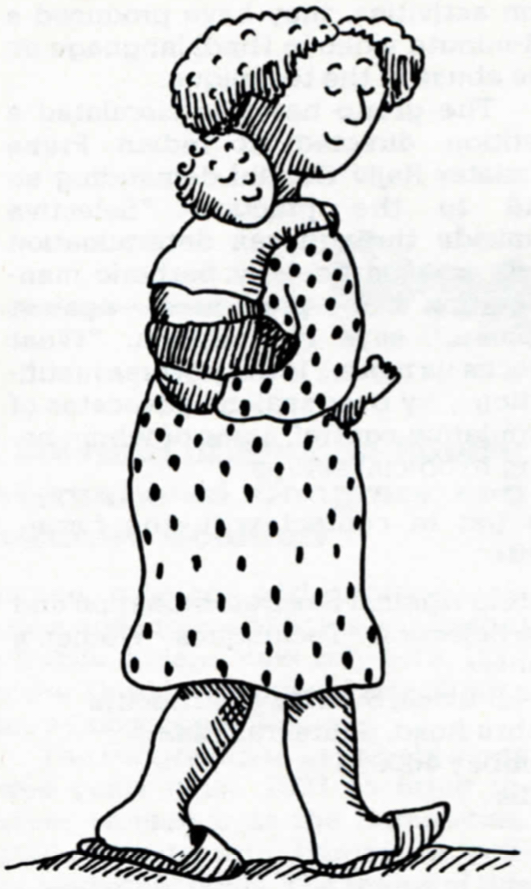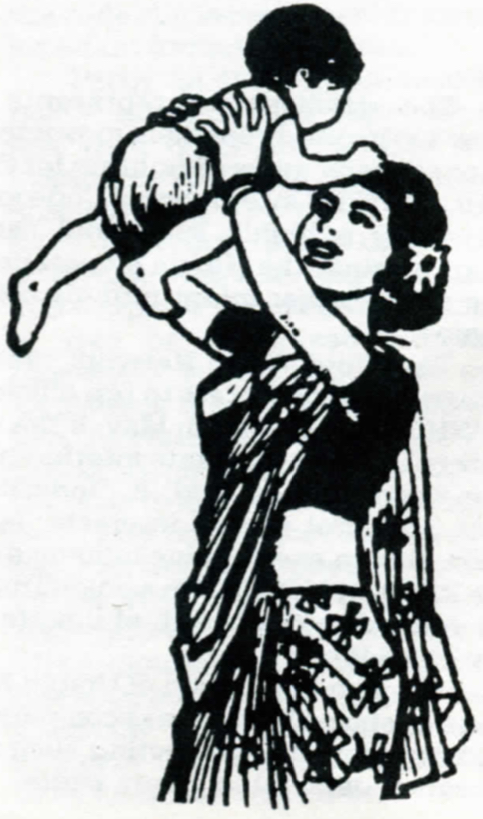Dalkon Shield Campaign
The struggle for just compensation for women injured by the Dalkon Shield interuterine contraceptive is still on. Women's health groups and lawyers are pressing the lUD manufacturer, A.H. Robins, to conduct another campaign to notify women users outside the U.S. that they have a legal claim against the company and could eventually win financial compensation for their injuries.
From the early to mid 1970s, Robins distributed approximately 1.7 million Dalkon lUDs in 79 foreign countries, the largest share going to Central America and Africa. About 2.8 million were distributed in the U.S.
Robins' first overseas notification campaign, launched in January 1986, required women to contact the company by April 30, 1986. According to the National Women's Health Network in Washington D.C., the entire campaign was "grossly inadequate," due to the close deadline and to Robin's failure to conduct a widespread media campaign through buying television and newspaper advertisements, as they had in the U.S. Moreover, the informational materials failed to include an illustration of the Dalkon Shield and to mention the type of injuries it induced, e.g. hysterectomies and ectopic pregnancies.
Foreign women filed only 66,000 claims, or four percent of total contraceptives distributed abroad, compared with about 11 percent in the U.S. The lawyer handling the suit against the company, Murray Drabkin, says that the company could be legally liable for further charges if it does not carry out a more effective campaign to reach women abroad.
The National Women's Health Network, which took independent initiatives to alert women abroad last springtime, is looking to play a key role in any second notification campaign. At present, the Network is designing a comprehensive strategy - producing an easy-to-understand claim form for Third World women, and identifying the best media outlets, mailing lists, networks for reaching women in all of the various foreign countries. The Network welcomes advice and contacts from women health groups and networks in affected countries abroad. They will also keep women informed about further developments in the Dalkon Shield case.
You can get in touch with them at:
National Women's Health Network
224 7th St.,SE Washington, D.C. 20003, U.S.A.
(202) 543-9222
New Zealand Women's Health Network
The New Zealand Women's Health Network is a national network of feminists concerned about health, created ten years ago. The group aims to provide a forum for women, especially non-health professionals, to discuss and educate one another on health problems and and develop responses to local and national health policies. The network defines health in the broadest sense, encompassing social and economic problems such as women and alcohol, disabled women's sex problems, lesbian motherhood, incest, industrial health, and patient's rights.
The group carries out a series of regular activities, including publishing a bimonthly newsletter, organizing occasional conferences and workshops, and distributing resources such as a friendly and accessible booklet "Coping with Menstruation: Information for Disabled Women." Besides dealing with the concerns of disabled women, the group's publications and programs also focus on the health situation and needs of the islands' indigenous Maori women. Finally, the network puts New Zealand women's health groups in touch with women's health groups in other countries.
To contact the network, write:
New Zealand Women's Health Network
P.O. Box 2312
Tauranga, New Zealand

Stop the Baby Milk Pushers
The Malaysia-based Third World Network has issued an urgent call for action to pressure the World Health Organization to reverse a policy decision on breastmilk substitutes for newborn children. The policy threatens to undo some of the hard-won gains of the decade-long, worldwide campaign by women's and consumer advocate groups to limit multinational corporations' promotion and marketing of breastmilk substitutes, particularly in developing countries.
The policy decision came as a result of a request by many countries for guidelines clarifying the intent of the International Code on the Marketing of Breastmilk Substitutes, a model code for national legislation adopted by the World Health Organization in 1981 for limiting the marketing and promotion of bottle-fed milk products. Though grassroots groups consider the code a crucial victory in the struggle to protect breastfeeding from unfair commercial competition, one criticism they have raised all along is that the code still leaves sizeable loopholes for infant formula companies.
Partly for this reason, health and policy experts from eight countries met with WHO and UNICEF staff in December 1985 to draft guidelines for implementing the code. One of the most important provisions they agreed upon was that "maternity wards and hospitals should not be recipients of free or subsidized supplies of breastmilk substitutes." One gaping loophole in the Code has permitted infant formula companies to continue giving large amounts of free milk supplies to hospitals and clinics. However, this crucial provision was omitted from the final guidelines published by the World Health Organization in May 1986. Anonymous sources inside WHO admitted to the daily newspaper International Herald Tribune that the provision was omitted because of pressure from the United States and baby food manufacturers.

The development represents a blow to the pro-breastmilk movement after so many years of fighting for the WHO/UNICEF International Code and launching a highly successful campaign against the Nestle corporation, one of the major infant formula companies.
The Third World Network sent a strong letter of protest to top officials of WHO and UNICEF in May. If the report of U.S. and corporate interference was correct, they said, it "indicates that powerful vested interests have been able to exert undue influence on the WHO and UNICEF in a crucial matter related to the health of infants of the Third World."
"Such manipulation of United Nations agencies by business companies and governments protecting such interests is deplorable," they wrote.
The Third World network asks individuals and groups to write letters expressing their concern over the matter and urging the agencies to reinstate the provision regarding free supplies.
Letters should be sent to:
Dr. Halfden Mahler
Director-General
World Health Organization
1211 Geneva 27
Switzerland
Mr. James P. Grant
Executive Director
UNICEF
866 United Nations Plaza
New York, NY 10017 USA
Please send copies of correspondence to:
Third World Network
87 Cantonment Road
Penang, Malaysia
Tel: 373-511
Telex: MA 40989
INDIA: Forum Against Sex Determination and Pre-Selection Techniques
Sophisticated techniques to determine the sex of an unborn fetus developed over the last decade are increasingly being used by women in India, who then abort unwanted female fetuses. The practice has been tolerated and even tacitly encouraged by the Indian government, which appears to see it as aiding official population control policies.
The test, known as amniocentesis, was developed fifteen years ago primarily for the detection of genetic deformities in fetuses, and has become a standard procedure in many countries for pregnant women at high risk. However, since the procedure involves an analysis of genetic chromosomes, the fetus' sex can also be detected.
The test was introduced in India some years ago for purposes of detecting genetic abnormalities but it quickly became popular as a sex-determination test among Indian women of all classes. Seeing the opportunity for profit, many doctors and clinics began to provide services for amniocentesis, with follow-up abortion referrals at hospitals and clinics. They also began to advertise widely in the Indian mass media.
Some Indian women explain the fact that they want to select the sex of their children by their reluctance to spend the thousands of rupees on a "bride price" later. But the practice also reveals the low value placed upon women.
Today, the amniocentesis test can be had in India for as little as 200 to 500 rupees. A 1982 survey conducted by the Women's Center in Bombay estimated that ten women per day underwent the test in Bombay alone, and that number may well have grown in the last four years. One unconfirmed estimate reported in an Indian magazine put at 78,000 the number of female fetuses aborted between 1978 and 1983.
Such discriminatory practices as selective abortion and female infanticide have contributed to a declining female-to-male population ratio in India, from 972.1000 in 1901 to 933:1000 in 1981. Pakistan and Iran are the only other two countries in the world which also have declining female-to-male ratios.
With the growing controversy over sex-selection, women activists, doctors, research organizations and lawyers have begun to actively campaign on the issue. The Forum Against Sex Determination and Sex-Preselection Techniques was formed in Bombay, India in 1985 to mobilize on the issue. In recent months, the group has organized pickets at hospitals conducting the tests and posted thousands of posters denouncing the practice. As part of their public education activities, they have produced a 28-minute video in Hindi language on the abuse of the technique.
The group has also circulated a petition directed at Indian Prime Minister Rajiv Gandhi demanding an end to the practice. "Selective femicide through sex determination tests is a particularly barbaric manifestation of prejudices against women," says the petition. "What shocks us more... is the peverse justification... by over-zealous advocates of population control, some of whom belong to official setups."
To get in contact with the forum, write:
Forum Against Sex Determination and
Pre-Selection Techniques Women's Center
104 B Block, Sunrise Apartments
Nehru Road, Santacruz (East)
Bombay 400055 India


